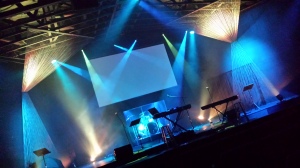
First, Some Background…
Electroluminescence was first discovered in 1907 when British experimenter HJ Round used an electrified probe on a chunk of silicon carbide crystal, and it emitted a visible shaft of light.
The first credibly reported creation of an LED was by Russian scientists in 1927. Eventually, after various reports in the 1950s, American experimenters Robert Brady and Gary Pittman, working at Texas Instruments in 1961, found that gallium arsenide emitted infrared radiation when electrical current was applied. Although this light was not visible to the naked eye, it allowed mass adoption of LEDs for infrared control devices. In 1962, General Electric employee Nick Holonyak Jr produced the first practical visible red LED, and in 1968 the Monsanto company first organized mass produced visible-light LEDs using gallium arsenide phosphate. The new LEDs were quickly and widely adapted and adopted for use in handheld devices such as calculators, wristwatches, and digital displays of all types. The first blue LEDs using gallium nitride were made in 1971 by Jacques Pankove at RCA Laboratories. But it wasn’t until the mid-1990s that further developments made LEDs bright enough for any replacement of traditional lighting, and most of today’s technology is based on research and discoveries made in the early 21st century.
Evolution of LEDs For Stage Lighting

DIP LED Technology
D.I.P. stands for “dual in-line package.” This is still the most familiar form seen in stage lighting, though it is rapidly being supplanted by newer technology. An LED is encapsulated in a 5 or 10 millimeter (sometimes smaller) colored plastic bullet-shaped case. These early LED designs are commonly recognized by their shape and by the long metal connectors protruding for easy solder connections. The solid plastic package of a DIP LED can be designed as a lens to focus its light, so it doesn’t need an external reflector like an incandescent stage light. Arrays of DIP LEDs are still being used in stage lights today because of their brightness and long lifespan, but I don’t think they hold a candle to…
SMD LED Technology

S.M.D. stands for “Surface Mounted Diode.” SMD chips allowed manufacturers to automate production, improve quality control, and offer a product that features better heat dispersion, high lumen output (high lumen flux ), and longer overall life (low optical decay) than its predecessor, the DIP LED . The SMD chip itself is created from layers of man-made nano sapphire and gallium crystal substrates. These crystals are ‘grown’ in scientific chambers and then sliced and layered and finally bonded to a ceramic base that can be easily mounted in various packages and forms of lighting. Far from being outdated, SMD LED continues to improve in its lumens per watt output, and these small, maintenance-free, and long-lasting solid-state light sources will be around for many years to come.
COB LED Technology

C.O.B. stands for “Chip On Board.” The greatest power densities in the smallest space are often the basis for unique selling points of various lighting products on the market, and COB technology allows these criteria to be realized by direct contact of the LED semiconductors on printed circuit boards. Theoretically, this allows improved thermal management (leading to longer LED life), higher packaging density, and thus higher performance. We are now beginning to see more COB technology in stage and effects lights…. Time will tell how well they will be accepted.
MCOB LED Technology

The next generation of LED is said to be MCOB, or “Multi Chip On Board.” This new lighting technology consists of many small chips integrated into one large single chip.
These are beginning to be used now in floodlights and high bay lights, but don’t yet seem to be in common use in stage lights or effects lights. In quantity, they are cheaper to assemble than multiple single chips and so make some products such as street lights and high bay lights more affordable than previously. But MCOB lights are still in their infancy, and currently still more expensive than SMD and COB for use in smaller applications like stage and effect lighting.
Thanks to LED Aladdin Limited for this info and the basis of this article. The article in its original form may be seen at http://ledaladdin.com/light_guides/LED_Lighting_Evolution.html
Please visit http://www.BurrightLights.com to see some good lighting options for Deejays, Musicians, Churches, and small venues.

Hello,
Love your blog, hope you’ll continue writing stuff about Lighting.
Greetings from Holland,
Kevin Redmeijer
LikeLike